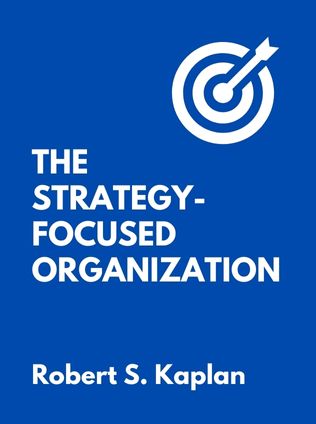
The Strategy-Focused Organization
How Balanced Scorecard Companies Thrive in the New Business Environment
By Robert S. Kaplan,
Published 09/2000
About the Author
Robert S. Kaplan and David P. Norton are the pioneers behind the concept of the Balanced Scorecard, a revolutionary approach to strategic management that has transformed numerous organizations. Kaplan is a professor at Harvard Business School and has a rich background in accounting and performance measurement. Norton is the founder of several consulting firms and has extensive experience in helping organizations implement strategic performance management systems. Together, they have authored several influential books and articles, solidifying their position as thought leaders in the realm of strategic management.
Main Idea
Highly productive organizations excel not merely because of their strategic formulations but because of their exceptional execution of these strategies. The cornerstone of their success is the Balanced Scorecard approach, which integrates strategy with daily operations and ensures that the strategy is a continuous process owned by everyone in the organization, not just top management.
Table of Contents
- Principle 1: Express the Strategy in Operational Terms
- Principle 2: Create Alignment Between the Organization and the Strategy
- Principle 3: Get Everyone Involved in Making Strategy
- Principle 4: Make Strategy an Ongoing Process
- Principle 5: Provide Effective Leadership
Principle 1: Express the Strategy in Operational Terms
The best strategy in the world cannot be executed effectively if it cannot be understood by the people involved. A strategy that cannot be adequately described cannot be understood. Therefore, the first step in creating management processes for the implementation of strategy is to construct a reliable and consistent framework for describing strategy.
Kaplan and Norton emphasize the use of strategy maps to outline all the cause-and-effect linkages between what an organization’s strategy is and what everyone does on a day-to-day basis. Specifically, strategy maps:
- Describe how tangible and intangible assets are mobilized.
- Outline how assets of all types are combined to create customer value propositions that add value.
- Specify how the desired financial outcomes will be realized.
- Detail the relationships between shareholders, customers, business processes, and competencies.
- Provide a foundation for building a Balanced Scorecard.
Thus, strategy maps are a logical and comprehensive way to describe an organization’s strategy in a graphical format. A good test of a strategy map is whether someone can understand the strategy of the organization by studying the strategy map alone without any additional commentary.
The practical benefits of strategy maps are significant:
- They enhance teamwork since everyone in the organization will be working towards a common objective.
- They allow every part of the organization to understand the bigger picture and where they fit in.
- Strategy maps are a disciplined way of communicating the strategy, increasing the likelihood of successful implementation.
- They form a link between objectives and operational actions.
- Strategy maps make explicit all the cause-and-effect relationships assumed to be applicable to the organization.
- They explain how tangible and intangible assets are combined or utilized to produce tangible customer and financial outcomes.
- Strategy maps detail how the organization intends to differentiate itself sustainably.
In a strategy-focused organization, it’s not just top management who understand what the organization’s basic strategy is. Everyone at every level understands the strategy and relates it to their daily activities. A strategy map is a key tool in getting everyone on the same page at the same time.
"Strategy maps enhance organizational alignment and consistency in purpose, empowering all employees to act in new and different ways to create more added value." - Robert S. Kaplan and David P. Norton
Principle 2: Create Alignment Between the Organization and the Strategy
Organizations exist to create synergy—additional benefits that could not be achieved by business units working individually. Yet many business units have their own specialist knowledge and language, making it difficult for communication to occur.
Strategy-focused organizations break through this barrier and create an environment where synergy can grow by:
Sign up for FREE and get access to 1,400+ books summaries.
You May Also Like
The Life-Changing Magic of Tidying Up
The Japanese Art of Decluttering and Organizing
By Marie KondoThe Lean Startup
How Today's Entrepreneurs Use Continuous Innovation to Create Radically Successful Businesses
By Eric RiesWho Moved My Cheese?
An Amazing Way to Deal with Change in Your Work and in Your Life
By Spencer Johnson, M.D.Make Your Bed
Little Things That Can Change Your Life...And Maybe the World
By William H. McRaven



















